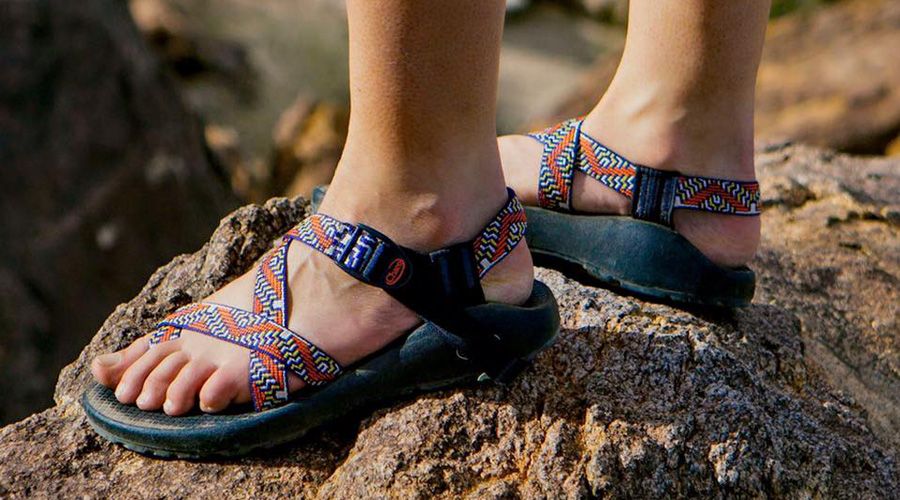By Charlie Lunan
Wolverine World Wide, Inc.’s (NYSE: WWW) stock price bumped up more than 9 percent July 26 after it reported better-than-expected second quarter results and said it was close to selling several underperforming brands.
The maker of Merrell, Sperry, Saucony and Chaco footwear reported diluted earnings per share of 24 cents for the second quarter ended June 18. While the price is the same as a year earlier, that was a penny higher than consensus estimates on Wall Street and came despite a 7.4 percent decline in revenue, which reached $583.7 million. On a currency-neutral basis, revenues fell 6.4 percent and adjusted diluted earnings per share increased 11.1 percent.
The results appeared to validate Wolverine World Wide’s strategy, which essentially calls for growing profits in a slow-to-no-growth world by cutting costs on the one hand, and growing market share on the other.
Outdoor & Lifestyle Group
At Wolverine’s outdoor and lifestyle group, underlying revenue was down 0.8 percent compared to the prior year, with its Chaco brand posting strong high-teens growth, while Merrell and Cat fell by low-single digits and Hush Puppies dropped by high-single digits.
At Merrell, the performance outdoor category grew mid-single digits globally and picked up market share in the U.S. outdoor market, while the active lifestyle category was, as expected, down double digits. U.S. wholesale numbers remained sluggish, due in part to going-out-of-business sales at Sports Authority and Sport Chalet, although sales to the brand’s largest strategic retail partners rose in the high teens both at home and abroad.
Wolverine Boston Group
At the company’s Wolverine Boston Group, underlying revenue declined 8.9 percent versus the prior year, with Saucony up mid-single digits, Sperry down high teens and Keds down mid-single digits. As expected, soft demand for boat shoes hurt Sperry as consumers continued to focus on more athletically-inspired styles. Saucony grew at a double-digit pace in its three largest regions outside the U.S.
Currency Translation Cloaks Margin Gains
Wolverine World Wide’s gross and operating margins each slipped 40 basis points to 38.8 percent and 7.2 percent, respectively, but improved by 80 and 30 basis points, respectively, on a currency-neutral basis compared with the year earlier quarter. WWW’s strategic plan calls for reaching operating margin of 12 percent by the end of 2018 with no top line growth. Krueger noted that a nearly 20 percent increase in higher margin e-commerce sales contributed to the improvement.
Inventory balances at the end of the quarter were 2.9 percent lower than the prior year, and the lowest for the period since Wolverine acquired PLG brands four years ago. Cash and cash equivalents were $221.7 million. Reported debt was $808 million, which resulted in net debt of $586.3 million at quarter end.
The results came as Wolverine continues to adjust to an era of slower global growth and retail disruption by closing stores, restructuring its operations in Canada and EMEA and consolidating its apparel and accessories initiatives, officials said. The company is also putting more emphasis on consumer research in a bid to grab market share.
“We’ve doubled down on investments for consumer research, trend, and advanced concepts and have quickly added new talent to our consumer insights team, along with our brand, product, and marketing teams,” said Blake W. Krueger, Wolverine World Wide’s chairman, CEO and president. “At the same time, construction has already begun on our first consumer and innovation hub here at our global headquarters.”
The New, New Normal
Wolverine reaffirmed its guidance for fiscal 2016, which calls for revenues to decline 8 percent to 4.3 percent on a reported basis and 5 percent to 1 percent on an underlying basis. While the company has big expectations for its new Arctic Grip sole technology, which will debut this fall across Merrell and five other brands, its primary focus is on gross margin expansion, portfolio management, optimizing DTC operations and controlling operating expenses.
“Over the past few months we have turned a very sharp eye towards our existing portfolio in the context of what we believe to be the new, new normal global retail environment,” Krueger said. “As such, we have made significant progress in reviewing strategic alternatives for our portfolio, which could include the sale of several brands in the portfolio that may not meet our go-forward performance criteria and profit goals. We are also strategically reviewing our entire store fleet against the rising tide of challenges impacting domestic retail stores.”
Lead photo courtesy Chaco/Wolverine World Wide
















